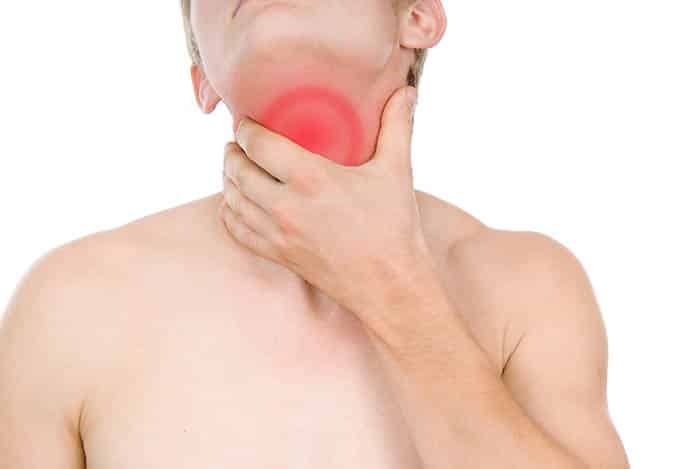Graves' disease
<< Autoimmune diseases
Graves' disease
Graves' disease is a chronic autoimmune disease that affects the thyroid gland. Graves' disease is the most common cause of hyperthyroidism (too high a metabolism). Graves' most characteristic symptoms include irritability, sleep problems, frequent heartbeats, digestive problems and sometimes' protruding eyes' (exophthalmos). At the other end of the scale, as the most common cause of low metabolism, we find Hashimoto's thyroiditis.
Symptoms of Graves' disease
The most common symptoms are poor tolerance for heat, diarrhea, weight loss, irritability, sleep problems, frequent heartbeats and digestive problems. Other symptoms may include hair loss, increased sweating, frequent bowel movements, muscle weakness, thickening of the skin on the legs and 'protruding eyes' - the latter is also called Graves' ophthalmopathy.
Clinical signs
At Graves, an enlarged thyroid gland may occasionally be felt and people may also have high blood pressure combined with uneven heartbeat or extra heartbeat. It has also been seen that people with Graves' disease may be affected by personality changes, such as psychosis, tiredness, anxiety, irritability and depression.
Diagnosis
The cause of Graves' disease is not known, but a genetic, hereditary link and an epigenetic link to the disease have been found. Those with familial cases of the disease have a higher risk of being affected. Blood tests look for elevated levels of T3 and T4. The enlarged thyroid gland can also be diagnosed with diagnostic ultrasound.
Two of the most definite symptoms of Graves' disease are 'protruding eyes' and thickening of the skin on the legs - these two symptoms are not seen in other hyperthyroidism conditions. However, it should be mentioned that only 25% of those with Graves are affected by exophthalmos.
Who is affected by the disease?
The disease affects 1 in 200 people. It affects women 7.5 times more often than men, and has normally started up in the age 40-60 years. Graves' disease accounts for between 50% and 80% of all hyperthyroidism.
Treatment
Treatment of Graves' disease involves antidiabetic drugs, radioactive iodine and / or surgery to remove the thyroid gland. It is said that medication must be given for 6 months up to 2 years to be effective. Unfortunately, these medicines do not come without side effects.
The most common form of treatment for autoimmune conditions is included immunosuppression - that is, drugs and measures that limit and cushion the body's own defense system. Gene therapy that limits inflammatory processes in immune cells has shown great progress in recent times, often in combination with increased activation of anti-inflammatory genes and processes.
Also read: - Complete overview of autoimmune diseases
What can I do even against pain in muscles, nerves and joints?
1. General exercise, specific exercise, stretching and activity are recommended, but stay within the pain limit. Two walks a day of 20-40 minutes make good for the whole body and sore muscles.
2. Trigger point / massage balls we strongly recommend - they come in different sizes so you can hit well even on all parts of the body. There is no better self help than this! We recommend the following (click the image below) - which is a complete set of 5 trigger point / massage balls in different sizes:
3. Training: Specific training with training tricks of various opponents (such as this complete set of 6 knits of different resistance) can help you train strength and function. Knit training often involves more specific training, which in turn can lead to more effective injury prevention and pain reduction.
4. Pain Relief - Cooling: Biofreeze is a natural product that can relieve pain by cooling the area gently. Cooling is especially recommended when the pain is very severe. When they have calmed down then heat treatment is recommended - it is therefore advisable to have both cooling and heating available.
5. Pain Relief - Heating: Warming up tight muscles can increase blood circulation and reduce pain. We recommend the following reusable hot / cold gasket (click here to read more about it) - which can be used both for cooling (can be frozen) and for heating (can be heated in the microwave).
6. Prevention and healing: Compression noise like that like this can increase blood circulation to the affected area, thereby speeding up the natural healing of injured or worn muscles and tendons.
Recommended products for pain relief in pain
Biofreeze (Cold / cryotherapy)
Also read: - Vitamin C can improve thymus function!
Also read: - New Alzheimer's treatment restores full memory!
Also read: - 8 tips for quicker treatment of tendon damage and tendonitis









